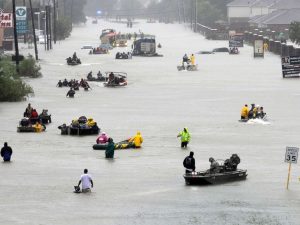The flooding in Houston caused by Hurricane Harvey in August 2017 has brought into relief the stark flood insurance protection gap for many communities in the U.S, according to the specialist insurance and reinsurance marketplace, Lloyd’s of London.

Hurricane Harvey flooding in Houston – Photo from ABC News
Lloyd’s ‘After the Storms’ report assessed the damage caused by Hurricane Harvey, finding that, whilst estimates of economic inland flood loss from Harvey reached $75 billion, insured industry losses were much lower, falling in the range of $25 billion to $35 billion.
Lloyd’s attributed the reason for such a pronounced difference between economic and insured losses to the fact that flooding is not typically covered as standard in normal homeowners’ and renters’ insurance policies.
Although flood cover is offered by the U.S Federal Emergency Management Agency (FEMA) through its National Flood Insurance Program (NFIP), uptake of the cover remains low, with just 12% of U.S homeowners carrying flood insurance and 80% of Houston residents lacking appropriate cover.
Even before Hurricane Harvey struck, the NFIP was $25 billion in debt and has been increasingly reliant on funds from U.S Congress, meaning it has had to raise premium prices, which has further contributed to the low uptake in flood cover.
NFIP policies are generally considered to be priced below the actuarial rate, but affordability remains a critical issue, and Lloyd’s suggests that these rising premium prices may explain why insured Harvey losses fell predominantly in commercial insurance books, which often offer policies that include flood cover.
Additionally, Lloyd’s research indicates that NFIP flood maps are often out of date or occasionally even politicised, making risks more difficult to price and encouraging individuals to populate areas prone to flooding.
Lloyd’s suggested that private insurers could play a larger role in pricing risk, building resilience, and increasing insurance penetration in the U.S flood market, but noted that providing broad coverage would remain difficult when in competition with the NFIP.
Insurers and reinsurers looking to provide cover for U.S flood risk will need to consider how to improve the accuracy of flood maps and encourage individuals and societies to invest in risk mitigation measures.
Flood modelling has improved significantly in recent years and will help re/insurers better understand their exposure to flood risk inland and in coastal areas.
However, Lloyd’s asserted that it will remain prudent for companies to factor uncertainty into their underwriting for less well-modelled risks and perils, such as flooding caused by extreme rain.


